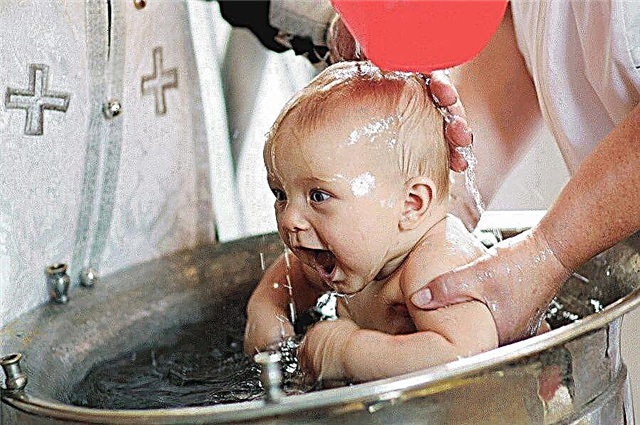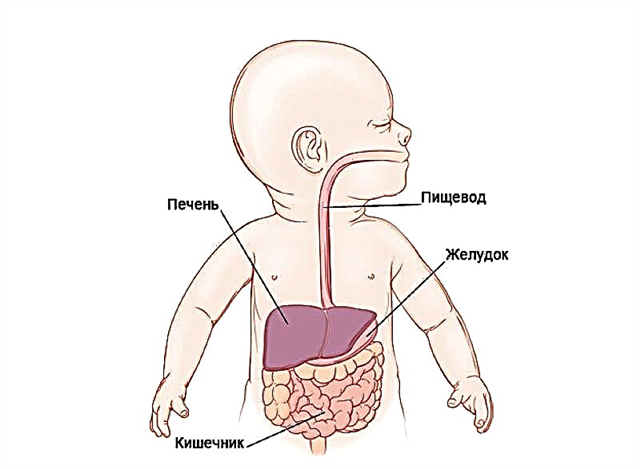A child's airways differ from those of an adult due to their immaturity. They are narrow enough and unable to perform many of the functions that adult organs can do. For example, the mucus-producing glands are underdeveloped and do not fulfill their protective function. Therefore, it is important to know what to do if the baby chokes.

Feeding
How does airway blockage occur?
The respiratory organs of a person, including a child, consist of the upper and lower respiratory tract. The former include:
- nasal cavity;
- pharynx;
- epiglottis;
- vocal cords;
- larynx.
The lower respiratory tract includes:
- trachea;
- bronchi;
- lungs (left and right);
- pleura.
Important! Anatomically, the human body is designed so that some of the components of the upper respiratory tract are also involved in food intake. The pharynx, epiglottis, and the trachea area where the vocal cords are located are the forerunners of the esophagus. No wonder everyone knows what it means to choke.
Nasal passages
The nasal cavity is directly connected to the pharynx. Air, entering the nasal passages, descends through it into the trachea. With the reverse movement of flows, for example, during a sneeze, air with a sharp push through the throat rushes into the nose. If there is food in the mouth at this moment, fragments of it will easily end up in the nasal passages.
Mouth
When swallowed, special cartilage protects the airways from foreign bodies and substances entering them. It is controlled by a conditioned reflex. If the epiglottis does not have time to close the entrance to the trachea, food enters the respiratory tract, which causes difficulty breathing, coughing and choking. This can happen if you laugh or talk while eating. Technically, it is sufficient to inhale when there is something in the mouth, because during inhalation it is precisely the protective cartilage that does not cover the trachea.
What threatens a blockage of the airways
Babies also differ from adults in that they cannot breathe through the mouth. Therefore, any difficulty with nasal breathing creates insurmountable problems for the child. Many mothers know that babies from birth to two months grunt and snore in their sleep. This happens because during sucking, milk often enters the upper parts of the posterior pharyngeal wall and into the nose. There it dries up and turns into crusts, which interfere with nasal breathing, dooming to wheezing. If the room where the baby sleeps was sufficiently humid and cool, the crusts would not have time to form, and the milk that got into the nose would easily flow down the back of the pharynx into the esophagus.
Attention! A blockage of dried mucus or milk in the nasal passages of an infant is life-threatening, because he still cannot breathe through his mouth.
To relieve your baby of shortness of breath, it is important to know what to do if the newborn chokes on milk. It is necessary after the completion of feeding, after some time, when the baby is still awake, rinse the nose with saline. It is easy to prepare it: dissolve a teaspoon of salt in a liter of water and drip your nose several times a day using a children's pipette. The saline solution is safe for newborns, moisturizes the mucous membranes and washes away milk residues from the walls of the upper respiratory tract.

Rinsing the nose
What can a baby choke on
Even in the maternity hospital, a woman is taught to put her newborn on her side, and not on her back. This is to avoid choking the baby if it spits up. The baby can suppress not only in this way. While sucking even the mother's breast, unpleasant situations can occur.
Milk
Happiness for a mother if she has an abundant milk production, in which the baby is full. But in such cases, you need to know what to do if the newborn choked while sucking on the breast. Most often, babies choke on milk in the first two months, when their mother's breasts have not yet adjusted to the required volumes, and not at all because the baby cannot control breathing and swallowing, as mothers often write about this on the forums. Swallowing is a reflex, it doesn't need to be learned. From the first second after birth, when the baby took a nipple or bottle, he can breathe and swallow, thanks to the epiglottis. But, if the stream is excessively abundant, the child does not have time to swallow a portion, after which the second has already arrived, which is why the child chokes.
Attention! The same applies to the water that children are given to drink. The nipple on the bottle must be marked for the baby's age in months.

Pacifier for 3 months old baby
Saliva
At the age of about 3 months, babies' salivary glands begin to work actively. This is not related to teething, although it may coincide with this event. Saliva constantly flows down the chin, the child learns his hands by placing his fist in his mouth. If, with a mouth full of saliva, the child is surprised at something (dad's grimace, a bright toy), mechanically, at the moment of surprise or joyful laughter, he will take a sharp and deep breath, which will allow saliva to enter the respiratory tract.
Regurgitation
After feeding the baby, you need to hold it "with a soldier", that is, in an upright position, so that the air that accidentally gets into the stomach comes out. As a rule, it comes out three times. Inexperienced or hurrying mothers, hearing one belch from a child, put him on his back, after which he spits up milk. This means that the remaining two portions of air did not have time to be released from the gastrointestinal tract and pushed milk with them. If the mother is in a hurry to go about her business, fed the child and immediately put him on his back, it is likely that he will spit up when he is no longer under supervision and choke on the released amount of milk. This is a very dangerous situation, especially since most new mothers have no idea what to do if their baby chokes.

Head to the side in a supine position
Interesting. Children, being in the womb in the last stages of pregnancy, are in such cramped conditions that most of the skull remains flattened on one side of the back of the head for some time after childbirth. Because of what, babies from 1 month old, lying on their backs, still put their head on its side, on the one that crouched. In most cases, this saves the life of a baby if he grows up in a family where little attention is paid to children, and there is no one to keep him as a soldier.
Foreign body
Feeding the baby with milk, in the sixth month of his life, relatives really want to diversify his diet with something very tasty. If at this age two lower teeth have already come out, most adults believe that it is possible to give the baby a cookie, apples or carrots, without realizing that this is a real parental crime. If an adult at least once tried to chew dry food with only two lower and even two more upper teeth, he would understand that this is impossible.
Instead, after giving the baby the first apple, everyone is happy that he took a bite of it, which is not surprising - it is not difficult to do this with two incisors. But what will happen next with this piece? His baby will try to swallow, all at once whole. The size of a piece of apple is often larger than the opening of the esophagus. Once in the throat, the apple can simply get stuck, blocking the lumen, which will prevent air from entering the bronchi, that is, the child will begin to suffocate, for this it is not at all necessary to run with a full mouth and laugh - the usual swallowing of too large a piece is life-threatening. Therefore, until the baby has teeth intended for chewing (and they are located in a row after the canines), it is impossible to give dry and solid food.

Baby and apple
Signs that the child is choking
If the baby has already choked, cough centers are triggered, because an irritant has hit them - food in the respiratory tract irritates special villi that tell the brain that something is interfering with them. In other words, a cough begins, often accompanied by vomiting. It is a natural defense reaction of the body to cough.
At times when breathing is difficult, the baby cannot breathe in in order to cough up. Therefore, you can understand that the toddler choked on the following grounds:
- lips turned blue;
- the child has an open mouth, but he does not make sounds;
- for older babies, it is typical to grab oneself by the throat with their hands;
- rolling eyes;
- loss of consciousness;
- severe pallor or cyanosis of the skin.
Attention! Infants up to one month of age can shake their heads without blinking or open and close their mouths like a fish.
What to do if the baby chokes
When the baby begins to choke at the time of sucking, it is required to stop feeding for a minute in order to give him the opportunity to cough up and catch his breath. Human physiology is arranged in such a way that it is easiest for the muscles of the respiratory tract to expel the irritant if the body is upright, with a slight forward tilt. The baby can be placed face down on your hand. Milk and other fluids, including saliva, water or formula, can be removed from the airways by the infant if not disturbed by tapping and patting. Only if the cough is unproductive or weak can you start banging on the back in a special way.
A suppressed baby, unable to cough on his own, needs urgent help from an adult who should not be afraid for a minute, hesitate, scold another, possibly guilty adult. It is required to immediately and confidently start providing first aid to a baby when choking:
- Place the baby face down on your hand so that the back and butt are above the head. For children who know how to stand, it is enough to bend forward, while with one hand an adult holds the child by the chest area.
- With confident, sharp movements, make sliding tapping with the base of the palm in the area between the shoulder blades, in the direction from the shoulder blades to the head, 5 times. It is important to measure the power of the blow, you cannot hit too hard.
- Turn the baby over onto its back. Turn a standing child to face you or walk around it yourself. With two fingers of your hand, press sharply 5 times on the chest, just above the area between the nipples, so that the chest slightly lowers. In infants, it is pressed through by about 1 cm, in older children - by 3 cm.
- Look into the mouth. If a foreign object appears there, carefully remove it.
Attention! If an adult does not see a foreign object in the respiratory tract, but knows that it is there for sure, it is absolutely impossible to climb down the throat and blindly try to get it. This will only lead to the fact that it will push through below, and it will be even more difficult to extract it.

Correct posture with first aid
A popular pediatrician, Evgeny Olegovich Komarovsky, reminds in his book about emergency care that a cough is more effective than the given algorithm of actions, so all that needs to be done with a baby when he choked is not to interfere with his coughing if he is already coughing.
Prevention
There is a popular video on the Internet in which mothers whose babies choke on milk during feeding due to excess flow are advised to apply more often to the breast to reduce the accumulated volume. From a medical point of view, this advice is not only useless, but also dangerous, as it threatens the child with overeating, and, as a result, obligatory abdominal pain. In the case when the baby has a risk of suffocation from the jet, it is better to first express the front milk, reducing the pressure from the mammary glands, after which the feeding will pass calmly, the child will easily swallow food.
When a baby is constantly choking on breast milk and saliva, it is important to pay attention to his emotional state. It is important to see a neurologist, pediatrician, and other required specialists on a regular basis, who in the early stages can detect problems with the development of reflexes or physiological features such as cleft palates, which are the causes of endless choking.
It is important that during feeding the mother takes a comfortable position for herself: sitting or lying on her side. She should not get up anywhere with a baby on her chest or do something in parallel. It is important to ensure that the breast does not pinch the baby's nose. The baby's head should be raised above the body while eating. A calm environment is the key to a healthy and peaceful feeding without choking.



